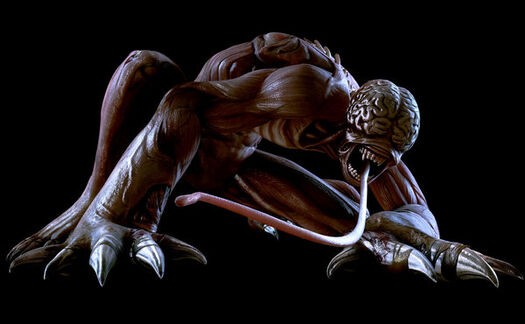So, what is survival horror? And where did it come from? Many believe that the first ever survival horror game was a 1989 Famicom game called Sweet Home. Loosely based on the horror film of the same name which was produced alongside the game, Suito Homu, it followed a group of teenagers who become trapped in a haunted mansion filled with puzzles and dangerous creatures. Shinji Makima claimed this game to be much of an inspiration to him when developing Resident Evil, most notably the door loading screen animations and the similar setting which the original Resident Evil would also use. Also, each character has their own set of skills and equipment which no-one else can use, e.g. Kazuo has a lighter and Akiko who can use her health kits to heal teammates, something which the characters in Resident Evil would also mimic. Additionally, the name Resident Evil seems to take its name from a note found in Sweet Home, which reads: 'house of residing evil'. [1]

A scene from Sweet Home.
After Sweet Home there was one title that would act much more as a precursor to the horrors of Resident Evil. In 1993 Alone in the Dark was released sporting puzzle-driven, find-the-clues gameplay while being, you guessed it, trapped in a mansion. The game used many character designs that would become staples in later survival horror titles, notably the inclusion of zombies and giant animals (some of which can not be killed and need to be escaped from). Rated as the tenth scariest game of all-time by X-Play [2], it wasn't until its third installment that it mixed the puzzle solving elements with aspects of combat, a convention adopted in later games Resident Evil and Silent Hill. Aswell as this, Alone in the Dark was one of the first games to feature the mix of 3D models on 2D graphics, something which Resident Evil would take much further and use for the majority of its games until the much more action-oriented Resident Evil 4 [1]. Alone in the Dark drew much inspiration from the writings of horror-fiction writer H.P. Lovecraft, whose chilling works were wracked with misanthropy. Many of his writing conventions were applied to the letters found around the mansion- one line is particularly frightening, "They will find my body but will not have my soul". [3]
Which brings us to this happy fellow below...

A Licker, blind but deadly.
[1] Davies, Jamie. "Surviving Horror: a brief timeline of evil". NTSC-uk. Retrieved on 30/03/2009
[3] Zenke, Michael. "Dreading the Shadows on the Wall". The Escapist. Retrieved on 31/03/2009











